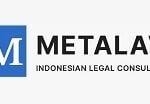-
How often is tax law amended and what is the process?
Australian taxes are imposed and administered at the federal (Commonwealth) level and at each state and territory level. The state and territory level also covers local government taxes. At the federal level, the key tax legislation consists of the Income Tax Assessment Act 1936 (Cth) and Income Tax Assessment Act 1997 (Cth) (income tax), A New Tax System (Goods and Services Tax) Act 1999 (goods and services tax (GST)), Fringe Benefits Tax Assessment Act 1986 (fringe benefits tax (FBT)) and the Superannuation Guarantee (Administration) Act 1992 (superannuation guarantee). At the Australian state and territory level, the key taxes include stamp duty, payroll tax and land tax. The Taxation Administration Act 1953 (Cth) provides for the administration of federal tax laws. Each state and territory has their own respective tax administration regime.
The key federal and state and territory taxes are summarised as follows:
- Income tax is imposed on the “taxable income” of taxable entities. Taxable income is broadly accounting profits of the taxpayer that are subject to various modifications required by the tax law.
- Capital gains tax (CGT) is not a separate tax but is broadly the income tax that applies to gains or losses calculated under the CGT rules in respect of “CGT events” (being broadly disposals and certain other events).
- GST an indirect, broad-based consumption tax levied in Australia on the supply of goods and services, and the importation of goods. The current rate of GST in Australia is 10%.
- FBT is levied by the Commonwealth government on the taxable value of “fringe benefits” provided to employees. This is charged at a flat rate of 47% after adjusting for GST credits on the grossed up value of the benefit.
- Payroll tax is a state-based tax, levied on the “taxable wages” of an employer. The applicable laws and rates vary in each Australian state and territory.
- Stamp duty is a state-based indirect tax which, applies to a wide range of transactions, including transfers and other transactions concerning “dutiable property”. The applicable laws and rates of stamp duty vary in each Australian state and territory.
- Land tax is a state-based tax levied on the value of all “taxable land” owned by a taxpayer on the relevant liability date. The applicable laws and rates of land tax vary in each Australian state and territory.
Generally, at the federal level, major amendments to tax laws are announced as part of the annual Federal Budget or by way of press release, following which a bill containing the proposed law or amendment to an existing law is then subsequently introduced into Parliament. The bill is debated in Parliament and becomes law (i.e. an Act) once it passes both houses of Parliament and receives Royal Assent from the Governor-General.
Where major changes to Australia’s federal tax laws are proposed, Treasury may undertake a public or targeted consultation process and take into account feedback received via submissions in drafting the relevant legislation. The commencement date of each amendment to the tax law is stipulated in the bill. An explanatory memorandum usually accompanies a bill, which seeks to provides readers with an explanation of the changes.
Bills that are passed can have retrospective effect. Tax authorities may also subsequently issue public guidance to assist taxpayers with interpretation and application of tax law. Taxpayers can also apply for private rulings on Australian tax consequences which are specific to their circumstances.
Common law also has a role to play in the interpretation of Australia’s tax laws. This refers to the law that has been developed from the decisions of the courts. Having said that, taxpayers and the tax authorities take few tax cases to the courts and tribunals in Australia. Reasons for this vary between taxpayers, the main ones being costs and time. In some cases, the tax law can be amended in response to a decision in a case.
Legislative instruments are a form of delegated legislation under the powers of an Act, in which it may delegate or give certain powers to certain bodies, such as the ATO. For example, under section 161 of the Income Tax Assessment Act 1936, the Commissioner of Taxation (Commissioner) has the power to provide for a legislative instrument for each financial year that requires taxpayers to lodge a tax return.
The tax law making process in each Australian state and territory generally follow a similar pattern to federal law.
-
What are the principal administrative obligations of a taxpayer, i.e. regarding the filing of tax returns and the maintenance of records?
The standard income tax year in Australia runs from 1 July to 30 June. However, companies can apply to the ATO to adopt a substituted accounting period, for example, 1 January to 31 December.
Australia’s tax system is broadly based on a self-assessment model whereby taxpayers are required to complete and lodge their tax returns and represent that the information provided in the returns is true and correct. Income tax returns are filed on an annual basis while the lodgement cycle for business activity statements (which facilitate the discharge of GST and PAYG instalment obligations) is generally monthly or quarterly, depending on the profile of the taxpayer.
Generally, most assessments are subject to a statute of limitations of 4 years from the date of the assessment except in cases of fraud or evasion. A 2-year period of review applies to certain small-to-medium sized business entities. Transfer pricing matters are subject to a 7-year amendment period.
Taxpayers are required to keep certain tax records to substantiate the positions taken in their tax returns. Generally, records must be maintained for five years, however record keeping requirements vary depending on the specific tax law that applies. For example, there are special documentation requirements where the transfer pricing rules apply to the taxpayer.
There are other tax obligations which taxpayers may have depending on their profile, and which states or territories they operate in or have assets. For example, taxpayers may have superannuation guarantee obligations, PAYG withholding, payroll tax and / or stamp duty lodgements and land tax payments.
Penalties and interest charges may apply for taxpayers that fail to satisfy its obligations under tax law. The penalties escalate depending on the degree of culpability, rather than the amount of tax involved, although base penalties may be calculated based on the amount of tax involved. They may also increase based on the size of the taxpayer.
-
Who are the key tax authorities? How do they engage with taxpayers and how are tax issues resolved?
Federal taxes (e.g. income tax, GST and FBT) are administered by the ATO, Australia’s principal revenue collection agency. Australian state and territory taxes (e.g. stamp duty, land tax and payroll tax) are administered by the revenue office of the relevant Australian state or territory. The ATO and AusIndustry (on behalf of Industry Innovation and Science Australia) jointly administer the research and development (R&D) tax incentive. Overall, the tax authorities have an important role in administering, managing and shaping the tax and superannuation systems in Australia.
The tax authorities publish various public rulings and guidance to assist taxpayers in meeting its obligations under tax law. Tax authorities can also issue private rulings which are only binding on the taxpayer applying for the ruling.
Although Australia’s tax system broadly adopts a self-assessment model, the tax authorities administer a range of compliance programs involving reviews and audits targeting different segments of the taxpayer population, as well as data collection and matching programs, that are designed to test the correctness of tax returns lodged by taxpayers. An amendment by the ATO may come following reviews and audits, in which the taxpayer may lodge an objection within specified time limits. For example, the ATO has a ‘Top 1000 combined assurance program’ pursuant to which the ATO seeks to obtain assurance that the top 1,000 public and multinational companies with turnover in excess of AUD250 million are reporting the right amount of income tax and GST in Australia or to identify areas of risk for further action.
In broad terms, all of the ATO’s compliance programs are directed to achieving ‘justified trust’, which involves the ATO seeking objective evidence that would lead a reasonable person to conclude a particular taxpayer has paid the right amount of tax. Assurance approaches are tailored based on the unique business profile of a taxpayer.
The tax authorities are generally committed to promoting a resolution culture that is aimed at avoiding disputes wherever possible and that, if disputes arise, they are resolved in a cost-effective, fair and collaborative manner. As such, the tax authorities and taxpayers resolve the vast majority of tax disputes between themselves. There are both administrative and legislated procedures to be adopted, with alternative dispute resolution becoming a more common part of the resolution of matters.
-
Are tax disputes heard by a court, tribunal or body independent of the tax authority? How long do such proceedings generally take?
The Australian judiciary is comprised of a mixture of federal and state courts and tribunals, some established by legislation and others derived from the British legal system. In respect of tax matters, some courts have inherent jurisdiction while others have powers set out by legislation. Tribunals are empowered by legislation. There are no tribunals or courts dedicated to tax matters. They are completely independent of the tax authorities, including in respect of funding.
Subject to the applicable legislation, and subject to any inherent jurisdiction of the relevant courts, federal tax disputes can be brought before the Administrative Appeals Tribunal (AAT) or the Federal Court of Australia (the Federal Court), and from there to the High Court of Australia (the High Court).1
Again, subject to the applicable legislation, Australian state and territory tax disputes can be brought before the relevant state or territory administrative tribunal or the Supreme Court of the relevant state or territory.2 Appeals can be made from there to the High Court.
Each forum has its own advantages and disadvantages that should be carefully considered by the taxpayer. These can range from costs, confidentiality and the matters that may be reviewed.
Proceedings are generally lengthy and costly. As such, taxpayers and the tax authorities take few tax cases to the courts and tribunals in Australia, and attempt to resolve the vast majority of disputes between themselves. However, it is not uncommon for state tax matters to be dealt with more quickly by the state courts.
Footnotes:
1 The Commonwealth government, on 16 December 2022, announced reforms to Australia’s system of administrative review. This reform will abolish the AAT and replace it with a new federal administrative review body. For the purposes of this publication, we refer to the AAT, having regard to its roles, powers and duties as it stood prior to the announcement. The AAT will continue to operate as normal until the reform takes effect.
2 Notwithstanding the reforms to Australia’s system of administrative review announced by the Commonwealth government, changes at the state and territory level are not expected at this stage.
-
What are the typical deadlines for the payment of taxes? Do special rules apply to disputed amounts of tax?
Taxpayers generally pay their income tax by way of instalments under the PAYG system throughout the income year. Most taxpayers lodge and pay PAYG quarterly but businesses with income of more than AUD20 million pay monthly instalments.
Instalments are generally calculated by multiplying an ‘instalment rate’ by the company’s ordinary income for the previous month or quarter. The instalment rate is notified to a taxpayer by the ATO and is based on tax payable under the most recent assessment issued to the taxpayer. Taxpayers can vary their instalment rate but may be subject to a penalty tax the taxpayer’s rate is less than 85% of the rate that otherwise applied.
When determining the amount payable under the assessment issued for the relevant income year, taxpayers will be entitled to a credit for any PAYG instalments paid during the course of that income year.
The due date for payment of an income tax liability varies depending on the entity type and profile of the taxpayer. Generally, for a company that has a 30 June balance date, the due date is 1 December, which can be earlier than the lodgement due date for the tax return. As such, companies generally make a balancing payment to the ATO prior to lodgement of the tax return, which is based on an estimated tax calculation. For companies with substituted accounting periods, tax is due and payable on the first day of the sixth month of the following year of income or such later date as notified by the Commissioner.
For individuals and trusts, the due date is generally the later of 21 days after the due date for lodgement or when a notice of assessment is received.
GST payments are required to be made at the same time the GST return is due. For quarterly lodgers, lodgement and payment is generally due on the 28th day of the month following the end of the quarter (other than for the December quarter, the lodgement and payment due date for which is 28 February). For monthly lodgers, lodgement and payment is generally due on the 21st day following the end of the month.
Employers liable to FBT are required to pay their FBT liability by 21 May for each FBT year.
The payment due dates for state and territory taxes varies depending on the tax and the relevant state and territory.
Penalties and interest charges generally apply for late payments.
Even a taxpayer is disputing an assessment, it must still pay the outstanding amount by the due date unless it has entered into a deferral or a 50/50 arrangement with the ATO. If a taxpayer has a good payment history, the ATO may agree to defer recovery action until the dispute is resolved or may offer a 50/50 arrangement where the taxpayer pays at least 50% of the disputed amount plus any other outstanding tax debts.
Overdue amounts, disputed or otherwise, incur interest.
-
Are tax authorities subject to a duty of confidentiality in respect of taxpayer data?
Taxpayer data is regarded as highly confidential and is protected under various regimes, including the Privacy Act 1988 (Cth), the Australian Government Agencies Privacy Code and taxpayer confidentiality provisions in tax law. Staff of the ATO are subject to strict confidentiality rules and bound by provisions such as Division 355 of Schedule 1 to the Taxation Administration Act 1953 (Cth). Under Division 355, it is an offence for tax officers to disclose ‘protected information’, which is information disclosed or obtained under or for the purposes of a taxation law which relates to the affairs of an entity and which identifies, or is reasonably capable of being used to identify, that entity. There are limited exceptions to this prohibition on disclosure.
Tax authorities may conduct data matching activities (i.e. source data from third parties) to ensure taxpayers fulfil their tax and superannuation obligations. The ATO’s data-matching programs follow the Office of the Australian Information Commissioner’s (OAIC) Guidelines on data matching in Australian Government administration (2014).
Division 355 of Schedule 1 to the Taxation Administration Act 1953 (Cth) sets out the limited circumstances in which the ATO can disclose taxpayer information to, such as to agencies responsible for state and territory revenue laws and agencies responsible for payments of social welfare and health.
-
Is this jurisdiction a signatory (or does it propose to become a signatory) to the Common Reporting Standard? Does it maintain (or intend to maintain) a public register of beneficial ownership?
Australia is a signatory to the Common Reporting Standard (CRS). The CRS legislation came into effect in Australia on 1 July 2017. The CRS is the single global standard for the collection, reporting and exchange of financial account information on foreign tax residents. Under the CRS, banks and financial institutions are required to collect and report financial account information on foreign tax residents to the ATO. This information is then exchanged with participating foreign tax authorities.
The current Government has proposed to implement a public registry of beneficial ownership, which will show who ultimately owns, controls or received profits. Treasury issued a consultation paper in November 2022, in which the consultation process has been completed. The Government has proposed it will adopt a phased approach, with the proposed changes to only require entities regulated under the Corporations Act 2001 (Cth) to maintain a register. Future phases would then capture other entities and legal vehicles. No set date or time frame has been provided by the Government for when it is anticipated to take effect as at the date of this publication.
-
What are the tests for determining residence of business entities (including transparent entities)?
Companies
A company is a resident of Australia for Australian income tax purposes if:
- it is incorporated in Australia; or
- it carries on business in Australia and it either has (i) its central management and control in Australia or (ii) its voting power controlled by shareholders who are residents of Australia.
In relation to the second requirement, the High Court has held that if a foreign-incorporated company carrying on business has its central management and control in Australia, it will be treated as carrying on business in Australia and will satisfy the definition of a resident of Australia.
Trusts
Trusts are typically treated as transparent entities under Australia’s income tax laws and not regarded as separate taxable entities. The definition of a resident for Australian tax purposes does not cover trusts. However, for the purposes of calculating the ‘net income’ of a trust (broadly, its taxable income which is then attributed to its beneficiaries), the trust is assumed to be a resident.
If a trust is a ‘public trading trust’, it will be taxed as a company. A public trading trust is a unit trust where the:
- the trust is a ‘public unit trust’ (e.g. units are offered to the public, units are held by no fewer than 50 persons, or an exempt entity holds at least 20% of the trust); and
- the trust either carries on a trading business (i.e. a business that does not consist wholly of passive activities such as investing or trading in debt instruments, equity or specified derivatives), or is able to control (whether directly or indirectly) the affairs or operations of an entity that carries on a trading business.
Partnerships
Partnerships are generally treated as transparent entities under Australia’s income tax law. It is usually not necessary to determine the residency status of general partnerships as the individual partners are taxed on their share of the net partnership income according to their individual residency status.
However, limited partnerships are treated as companies for Australian tax purposes unless they qualify as venture capital limited partnerships or early stage venture capital limited partnerships.
A limited partnership will be considered a resident of Australia if:
- the partnership was formed in Australia;
- the partnership either carries on business in Australia or has its central management and control in Australia.
-
Do tax authorities in this jurisdiction target cross border transactions within an international group? If so, how?
International related party dealings have been under increased scrutiny from the ATO. The ATO has been concerned about income or profits generated in Australia that are not being subjected to domestic tax due to non-arm’s length conditions of international related party dealings.
The ATO’s focus area includes:
- non-commercial financing arrangements;
- related-party financing arrangements;
- related party service arrangements;
- mischaracterisation of management services;
- customer and supplier contracts or relationships moved offshore;
- shifting Australian assets or operations offshore; and
- offshore hubs that derive high profits.
The ATO publishes taxation rulings and practical compliance guideline to inform taxpayers of ATO’s approach to issues associated with cross-border related party transactions, including how taxpayers can self-assess their risk having regard to their own circumstances.
The ATO has also issued an alert targeting transfers of intangible assets that are developed or co-created in Australia, such as intellectual property, to foreign jurisdictions. The ATO’s concerns are twofold – firstly, the selection of a particular type of payment (for example, services payment or royalty) to arrive at a particular tax outcome and secondly, the remuneration Australian entities receive in connection with the development, enhancement, maintenance, protection and exploitation of intangible assets (in accordance with transfer pricing principles of considering functions, assets and risks). As a subset of these issues, the ATO is also concerned with arrangements where intangible assets are migrated to international related parties as part of non-arm’s length arrangements.
The Government is also currently consulting on a proposed measure which will deny deductions for payments made by a ‘significant global entity’ (broadly, an entity that is a part of a multinational group with consolidated annual global income of A$1 billion or more) attributable to a right to exploit an intangible asset (e.g. intellectual property, access to customer databases, algorithms and software licences) to an associate that is a resident in a low corporate tax jurisdiction. A low corporate tax jurisdiction includes a foreign country with a corporate income tax rate of less than 15%.
-
Is there a controlled foreign corporation (CFC) regime or equivalent?
Australia’s CFC rules can apply to foreign resident companies that are controlled by Australian residents. When applicable, the CFC rules can operate to attribute certain forms of passive income to Australian resident shareholders with an ‘associate-inclusive control interest’ in the foreign resident company of 10% or more (referred to as “attributable taxpayers”).
A foreign resident company will be regarded as a CFC, if:
- there is a group of 5 or fewer Australian tax residents who have associate-inclusive interests in the foreign resident company of not less than 50%;
- there is a single Australian tax resident whose associate-inclusive interest in the foreign resident company is not less than 40%, and there is no other group that controls the foreign resident company; or
- the foreign resident company is actually controlled by a group of 5 or fewer Australian tax residents, either alone or together with associates (whether or not those associates are Australian tax residents).
The type of income that is attributed to attributable taxpayers depends on whether the foreign resident company is a resident of a listed country (being Canada, France, Germany, Japan, New Zealand, United Kingdom and United States of America) or an unlisted country (any other jurisdictions) for the purposes of the CFC rules. There is more limited attribution from foreign resident companies which are residents of listed countries as those countries are considered to have comparable tax systems to Australia. However, in the case of unlisted countries, if the CFC passes the active income test, there should be no attributable income. The active income test broadly requires the sum of the CFC’s passive income, tainted services income and tainted sales income to be less than 5% of its gross turnover.
-
Is there a transfer pricing regime? Is there a "thin capitalization" regime? Is there a "safe harbour" or is it possible to obtain an advance pricing agreement?
Transfer pricing
As noted in the commentary on question 9 above, Australia has transfer pricing rules which are designed to counter arrangements where transactions between international related parties are not on arm’s length terms. Australia’s legislation does not specify any particular method to be used in respect of transactions between related parties. The following is a non-exhaustive list of the methodologies acceptable to the ATO:
- comparable uncontrolled price method;
- cost plus method;
- resale provide method;
- profits split method;
- marginal costing; and
- transactional net margin method.
Under the legislation, a country-by-country (CbC) reporting entity is required to lodge a CbC report, a master file and Australian local file annually. Taxpayers may also voluntarily prepare transfer pricing documentation to support its transfer pricing treatment. This documentation should include information on the corporate structure of the worldwide group, internal procedures and controls that are in place and functions, assets, risks and operational aspects of the business.
For eligible taxpayers, the ATO has developed some simplified transfer pricing record-keeping options to minimise record-keeping and compliance costs. There are 7 simplified transfer pricing record-keeping options and each are subject to a threshold:
- small taxpayers;
- distributors;
- low value adding intra-group services;
- low-level inbound loans;
- materiality;
- technical services; and
- low-level outbound loans.
The ATO also has an advance pricing arrangement (APA) program under which a taxpayer can seek a unilateral agreement with the ATO on the method of application of arm’s length principles to its cross-border dealings over a fixed period of time (usually three to five years). The ATO is administratively bound by the terms of the APA. This provides taxpayers the assurance that their cross-border dealings comply with the arm’s length principle.
The APA process has three stages:
stage 1 – early engagement which can include a triage workshop, preliminary discussion and an APA request review workshop;
stage 2 – APA application. This stage will involve the ATO analysing and evaluating the application, the parties negotiating before reaching an agreement. If an agreement cannot be reached, the ATO will withdraw from negotiations; and
stage 3 – monitoring compliance. Under the terms of the APA, the taxpayer prepares and lodges annually an Annual Compliance Report which needs to contain sufficient information detailing the actual results for the relevant year and to demonstrate compliance with the terms of the APA.
While an APA provides taxpayers the assurance that their cross-border dealings comply with arm’s length principle, it does not preclude taxpayers from a risk review or audit of its overall business.
Thin capitalisation
The thin capitalisation rules limit the extent of Australian deductions for interest expenses to the extent that the debt exceeds the ‘maximum allowable debt’. The rules broadly apply to Australian entities which are controller of foreign entities and/or foreign controlled. There are some exceptions to the thin capitalisation rules. For example, the rules do not apply where an entity’s (and its associates) deductions for interest are A$2 million or less for a particular income year.
Under the law which applied up to 30 June 2023, there were three tests available to determine a taxpayer’s maximum allowable debt for a particular income year:
- the safe harbour test;
- the arm’s length test; or
- the worldwide gearing debt test.
However, as at the time of writing, the Government has proposed material changes to the thin capitalisation rules which are intended to apply from 1 July 2023. If the proposed changes are enacted in their current form:
- the fixed ratio test will replace the existing safe harbour test. It will be the default method for general class investors unless an alternative test is chosen. Under the fixed ratio test, an entity can claim net debt deductions of up to 30% of its ‘tax EBITDA’ (earnings before interest, taxes, depreciation and amortization)’;
- the third-party debt test will replace the existing arm’s length debt amount. It allows an entity to claim interest deductions attributable to third-party debt based on certain assumptions; and
- the group ratio test will replace the existing worldwide gearing test and allow an entity in certain groups to deduct net debt deductions in excess of the amount permitted under the fixed ratio test, but limited to its group ratio multiplied by tax EBITDA.
-
Is there a general anti-avoidance rule (GAAR) and, if so, how is it enforced by tax authorities (e.g. in negotiations, litigation)?
In Australia, GAAR applies to taxes such as income tax, GST, FBT, payroll tax, stamp duty and land tax. The rules vary between the different taxes.
The general anti-avoidance provision (Part IVA) under Australia’s income tax law provides the ATO with the ability to cancel a tax benefit that would otherwise be obtained by a taxpayer as a result of a scheme that contravenes the general anti-avoidance rule.
Broadly, there must be three elements for Part IVA to apply:
- a scheme;
- a tax benefit; and
- a sole or dominant purpose to obtain the tax benefit in connection with the scheme.
While it was common to see GAAR disputes in litigation, this is now rare as many are resolved and settled prior to litigation. As a result, there are provisions in Part IVA that have not been litigated before the courts.
In the 2023-2024 Federal Budget, the Government proposed to expand the scope of the GAAR such that it applies to:
- schemes that reduce tax paid in Australia by accessing a lower withholding tax rate on income paid to foreign residents; and
- schemes that achieve an Australian income tax benefit, even where the dominant purpose was to reduce foreign income tax.
The amendments will apply from 1 July 2024, regardless of whether the scheme was entered into before 1 July 2024.
-
Is there a digital services tax? If so, is there an intention to withdraw or amend it once a multilateral solution is in place?
Australia does not currently impose a digital services tax. In 2018, the Government released a discussion paper seeking views on a unilateral approach to tax challenges arising from the digitisation of the economy. Following the consultation, the Government decided not to proceed with a digital services tax and Australia has since actively engaged in a multilateral process with other OECD countries in relation to the proposed OECD two-pillar solution.
-
Have any of the OECD BEPS recommendations, including the OECD’s recent two-pillar solution to address the tax challenges arising from digitalisation of the economy, been implemented or are any planned to be implemented?
Australia has committed to implementing various OECD BEPS recommendations. It is also committed to the OECD’s BEPS two-pillar initiative.
On 9 May 2023, the Government announced in the 2023–2024 Federal Budget timetable for implementing Pillar Two in Australia’s tax laws. A 15% global minimum tax for large multinational enterprises (broadly enterprises with a global turnover above €750 million) is proposed to be introduced over two years consisting of:
- an Income Inclusion Rule to apply to income years starting on or after 1 January 2024. In broad terms, this rule will allow Australia to impose top-up tax in relation to the income of low-taxed subsidiaries;
- an Undertaxed Profits Rule to apply to income years starting on or after 1 January 2025. This rule will deny deductions or make similar adjustments where low-taxed income is not taxed under the Income Inclusion Rule; and
A 15% domestic minimum top-up tax is also proposed to be introduced for income years starting on or after 1 January 2024. This will ensure that Australia retains taxing rights over Australian profits which are undertaxed.
-
How has the OECD BEPS program impacted tax policies?
The OECD BEPS program has had a significant impact on tax policies in Australia. Australia has implemented various measures to address the risks highlighted by the OECD BEPS program, including:
- hybrid mismatch rules (BEPS Action 2): these rules target arrangements that exploit differences in the tax treatment of an entity or instrument under the laws of two or more jurisdictions;
- country-by-country reporting (BEPS Action 13): Australia has fully implemented country-by-country reporting, including the exchange of country-by-country reporting reports with partner jurisdictions via the OECD Common Transmission System;
- mutual agreement procedure (BEPS Action 14): Australia has updated its agreement procedures guidance to implement recommendations in BEPS Action 14;
- multilateral Instrument (MLI) (BEPS Action 15): it is expected the MLI will modify 35 of Australia’s tax treaties to implement integrity provisions to protect those treaties from being exploited and to improve tax treaty related dispute resolutions mechanisms.
In additional to the OECD BEPS recommendation, Australia has also introduced measures that strengthen the integrity of Australia’s tax system. There are specific anti-avoidance rules for significant global entities such as the diverted profits tax (DPT) and Multinational Anti-Avoidance Law (MAAL) regimes. The ATO has also established a Tax Avoidance Taskforce to address corporate and multinational tax avoidance.
-
Does the tax system broadly follow the OECD Model i.e. does it have taxation of: a) business profits, b) employment income and pensions, c) VAT (or other indirect tax), d) savings income and royalties, e) income from land, f) capital gains, g) stamp and/or capital duties? If so, what are the current rates and how are they applied?
Business profits
Australian resident companies are subject to tax on their worldwide income. Generally, foreign resident companies are subject to tax on Australian-sourced income.
Where a company is resident in a country with which Australia has concluded a double taxation agreement, Australia’s right to tax business profits is generally limited to profits attributable to a permanent establishment (PE) in Australia.
Tax is imposed on the taxable income of a business, which is broadly calculated by subtracting allowable deductions from assessable income. The income tax rate for companies is 30%, except for companies that have less than A$50 million of “aggregated turnover” (which includes the turnover of affiliated and connected entities) and derive no more than 80% of their income in passive forms, which are taxed at 25%.
Employment income and pensions
Individuals are taxed on employment income from both Australian and foreign sources, at their marginal tax rate.
Payroll tax is a state tax and is assessed on the gross wages paid or payable to employees by an employer whose total Australian taxable wages exceeds a certain threshold amount. Each state and territory has its own payroll tax legislation, with different rates and thresholds.
GST
GST is an indirect, broad-based consumption tax levied in Australia on the supply of goods and services, and the importation of goods. GST is similar to taxes known in other countries as value-added taxes (VATs). The current rate of GST in Australia is 10%. In general, an entity must be registered for GST if it carries on an enterprise in Australia and its annual GST turnover meets the registration turnover threshold (which is currently A$75,000). Registered entities must pay GST on the consideration received for its taxable supplies and importations (but it is usual commercial practice to contractually pass on the GST liability to recipients), and may claim input tax credits (i.e. refunds of GST) for the GST cost of its business acquisitions.
In addition, foreign entities may be liable to pay GST on imported services and supplies of digital products and low value imported goods to Australian private consumers.
Savings income and royalties
Savings income, such as bank interest, as well as royalty income is taxed at the taxpayer’s applicable tax rate.
Interest and royalties derived by a foreign resident is subject to withholding tax unless an exemption applies.
Income from land
Income from land, such as rental income, is generally taxed at the taxpayer’s applicable tax rate.
Capital gains
CGT is not a separate tax but is broadly the income tax that applies to gains or losses calculated under the CGT rules in respect of ‘CGT events’ (being broadly disposals and certain other events).
Resident individuals and superannuation entities are typically entitled to a discount of 50% for individuals, and 33⅓% for complying superannuation entities on capital gains in respect of CGT assets held for at least 12 months before the time of the CGT event.
Foreign residents are generally not subject to CGT except where the gain relates to Australian land, interests in Australian land or shares or rights in Australian land-rich entities. Purchasers of Australian land, interests in Australian land or shares or rights to acquire interests in Australian land-rich entities, are required to pay 12.5% of the consideration payable to foreign resident sellers to the ATO (subject to certain exclusions and exemptions). This amount is usually collected by way of a deduction from the consideration otherwise payable.
Stamp duty
Each Australian state and territory imposes stamp duty under its own stamp duty legislation. Stamp duty applies to a wide range of transactions, including but not limited to:
- transfers and other transactions concerning ‘dutiable property’ (e.g. land);
- transactions involving ‘land holder’ entities (i.e. entities that have a direct or indirect interest in “land” with a certain minimum market value);
- lease instruments granted for a premium or other consideration;
- insurance; and
- indirect “land” acquisitions via a share or unit acquisition.
Stamp duty is imposed to the extent that an exemption or exemption otherwise applies. For example, the corporate reconstruction exemption or concession may be available to intra-group transfers of dutiable property undertaken for operational efficiency purposes.
The party liable to pay the stamp duty depends on the type of stamp duty. The rates of stamp duty vary in each Australian state and territory, with the lowest rate currently 4.5% and the highest rate currently 6.5%. In New South Wales, a premium rate of 7% applies to transfers of residential land with a dutiable value currently exceeding $3,505,000.
In addition, a surcharge also applies to a purchase of residential land by a “foreign person” in most Australian jurisdictions at a rate of either 7% or 8%. A surcharge of 1.5% also applies to the acquisition (either directly or indirectly) of primary production land in Tasmania by a foreign person. Relevantly, citizens of most foreign countries who are not ordinarily resident in Australia, and companies and trusts subject to the Foreign Acquisitions and Takeovers Act 1975 (Cth) are generally treated as foreign persons.
Land tax
Land tax is imposed in each Australian state and territory (other than the Northern Territory) at progressive rates on the relevant liability date based on the total value of all “taxable land” owned by a taxpayer. Certain Australian states and territories also impose a surcharge land tax, in addition to the general land tax, in respect of land owned by a foreign person or absentee owner.
Land tax is imposed to the extent that a concession or exemption otherwise applies. For example, an exemption from land tax is available for land used and occupied as a principal place of residence or land zoned rural, rural residential or non-urban that is mainly used for primary production.
-
Is business tax levied on, broadly, the revenue profits of a business computed in accordance with accounting principles?
Income tax is imposed on the taxable income of entities that are required to pay tax. Taxable income is assessable income less allowable deductions. Calculating taxable income involves starting with the accounting profit or loss for an income tax period, which is calculated in accordance with accounting principles, and making certain adjustments for items such as provisions, depreciation, and timing differences, to calculate taxable income. The relevant tax rate is applied to the taxable income to compute the tax payable, if any.
-
Are common business vehicles such as companies, partnerships and trusts recognised as taxable entities or are they tax transparent?
Taxable entities generally include individuals, companies, and limited partnerships (except certain venture capital limited partnerships). Tax transparent entities are not taxable entities and generally include trusts and general law partnerships.
-
Is liability to business taxation based on tax residence or registration? If so, what are the tests?
Liability to business taxation is based on tax residence. See the response to question 8 for the residency tests.
An Australian resident company is subject to tax in Australia on its worldwide income, while an Australian branch of a foreign resident company is subject to tax on profits attributable to the Australian branch at the corporate tax rate.
-
Are there any favourable taxation regimes for particular areas (e.g. enterprise zones) or sectors (e.g. financial services)?
While there are not any favourable taxation regimes for particular areas or sectors, certain incentives are available to the venture capital sector.
The R&D Tax Incentive program is available for entities incurring eligible expenditure on R&D activities, which includes certain software R&D activities commonly conducted by fintechs. See the response to question 26 for a summary of the R&D Tax Incentive program.
Fintech investment vehicles may be structured as venture capital limited partnerships (VCLPs) or early stage venture capital limited partnerships (ESVCLPs), and receive favourable tax treatment for eligible venture capital investments. See the response to question 26 for a summary of the favourable tax treatment for eligible venture capital investments.
Incentives are available for eligible investments made in start-ups known as Early Stage Innovation Companies (ESICs), which are generally newly incorporated entities with low income and expenses. See the response to question 26 for a summary of the tax incentives available for investments in an ESIC.
Foreign income tax offsets (FITO) are available to avoid double taxation in respect of foreign tax paid on income or gains that are assessable in Australia, provided that the taxpayer’s assessable income includes the foreign income, and the taxpayer has paid foreign tax in respect of that foreign income.
-
Are there any special tax regimes for intellectual property, such as patent box?
Not at this stage. In the 2021-22 Federal Budget, the former federal government announced that it would introduce a patent box regime, which would tax corporate income derived from eligible Australian patents in the medical and biotechnology sectors, at a concessional rate of 17%. However, the current Government recently announced that it would not be proceeding with the patent box regime.
-
Is fiscal consolidation permitted? Are groups of companies recognised for tax purposes and, if so, are there any jurisdictional limitations on what can constitute a tax group? Is there a group contribution system or can losses otherwise be relieved across group companies?
Under Australian tax law, it is possible to form one of two types of tax consolidated groups:
- a tax consolidated group (TCG) can be formed where a single Australian resident holding company wholly owns all of the interests in at least one other Australian resident company; and
- a multiple entry consolidated (MEC) group can be formed where at least two Australian resident companies are wholly-owned by the same foreign resident company.
In both cases, the members of the group are treated as a single entity for income tax purposes, and intra-group transactions such as dividends, loans, or transfers of assets are generally ignored for income tax purposes. Forming a TCG or MEC enables the consolidation of tax attributes such as losses or franking credits, and the ability of tax losses from one group member being offset against income from another group member.
A potential benefit of forming a TCG or MEC is the ability to reset the tax basis of assets of subsidiary members of the group. However, the benefit of resetting the tax basis of assets of a subsidiary is typically only immediately realisable where the subsidiary has assets such as depreciating assets (i.e. higher tax depreciation deductions are available going forward) or trading stock. Although the tax basis of goodwill might be reset, amortisation of goodwill is not deductible for Australian tax purposes. Careful consideration needs to be given to consolidation decision, as a resetting of the tax cost bases in the underlying assets of the group can in certain circumstances result in taxable gains arising.
A corporate group may also form a GST group. When a corporate group forms a GST group, the ‘representative member’ of the GST group has the primary responsibility for the indirect tax amounts of the GST group.
The head company and representative member each have the obligation to lodge a single return on behalf of the TCG and GST group (respectively) and to make any payments of tax or GST. This raises the question of how the head company or representative member will be placed in sufficient funds to actually pay the group’s income tax and GST bills as they fall due. A tax funding agreement and indirect tax funding agreement deals with this issue by requiring each member of a TCG and GST group (respectively) to pay the head company and representative member (respectively) an amount that is calculated to reflect their share of the group’s tax bill.
-
Are there any withholding taxes?
Australian Business Register (ABN)
If a supplier does not provide an ABN and the total payment for goods and services it supplies is more than $75 (excluding GST), the recipient must withhold at the top rate of tax which is currently 47% from the payment and pay it to the Australian Taxation Office.
There are exceptions to this withholding including the supply is made by the supplier in its private capacity or as their hobby, the supplier is not carrying on an enterprise in Australia or the supply is wholly input taxed such as most financial supplies and supplies of residential rent and residential premises.
Dividend, royalty and interest
Australia imposes dividend (30%), royalty (30%) and interest (10%) withholding taxes on payments to foreign residents. The withholding tax rates may be reduced under a double tax agreement or as a consequence of exceptions under the domestic law. For example:
- an unfranked dividend may be exempt from dividend withholding tax to the extent it is declared to be conduit foreign income; and
- interest paid in connection with debt that has been “publicly offered” in accordance with the requirements under Australia’s tax laws may be exempt from interest withholding tax.
In the case of dividends, distributions that are “franked” (i.e. paid from after tax profits) or represent income derived from foreign business operations (i.e. conduit foreign income) are generally not subject to withholding.
Certain trust distributions
Certain trust distributions (i.e. ‘fund payments’) made to foreign resident investors in a managed investment trust or attribution managed investment trusts (Withholding MITs) are subject to a final withholding tax at a concessional rate of 15%. The foreign resident investor must be residents of countries with which Australia has an ‘exchange of information’ (EOI) agreement in order to qualify for the concessional rate. Australia has entered into EOI agreements with over 130 jurisdictions.
Examples of fund payments are distributions of rent or capital gains from the disposal of interests in Australian real property situated in Australia. Fund payments exclude distributions of dividends, interest and royalties, which are subject to the standard withholding regime as mentioned above.
Natural resource payments
Withholding tax is imposed on payments made to foreign residents that are based on the value or quantity of a natural resource produced or recovered in Australia. The entity will be advised by the Commissioner of Taxation of the amount to be withheld. The rate of withholding usually approximates an amount that would meet any tax liability which is or may become due by the foreign resident. For example, if the foreign resident is a company and would be subject to the corporate tax rate of 30% if that foreign resident company were taxable in Australia, then the rate of withholding would ordinarily be 30%.
Construction and related activities payments
An entity that carries on an enterprise must withhold an amount on payments made under construction contracts or for related activities to a foreign resident, an entity that the payer believes is a foreign resident, or an entity that the payer has no reasonable grounds to believe is an Australian resident. Construction works include, but are not limited to, mine site development, natural gas field development, and natural resource infrastructure. The imposition of withholding tax extends to construction-related activities such as the administration, assembly, commissioning and operation of facilities, engineering, installation, project management, site management, the supervision and provision of personnel, and the supply of plant and equipment.
Mining payments
Australia imposes a mining withholding tax on mining payments made to Indigenous people or groups relating to the use of Indigenous land for mining and exploration purposes. Broadly, a mining payment is a payment made in consideration for the issuing, granting or renewal of mining rights in respect of Indigenous land, or the granting of permission to enter or remain on Indigenous land in relation to mining or exploration purposes, or by way of royalties in respect of the mining of minerals on Indigenous land. The current rate of mining withholding tax is 4%.
-
Are there any environmental taxes payable by businesses?
Australia does not impose environmental taxes on businesses.
-
Is dividend income received from resident and/or non-resident companies taxable?
Dividend income received by residents (for Australian tax purposes) from resident and/or foreign resident companies is included in the assessable income of the Australian resident and taxed at the applicable tax rate. However, dividend income received from a foreign resident company may be exempt when received by an Australian resident company that holds at least a 10% participation interest (generally, equity that gives rise to control or voting rights) in the foreign resident company.
Any tax paid by a company prior to paying a dividend may be imputed or attributed to the shareholders, which may be allocated by way of franking credits attached to the dividends the shareholder receives.
If a company pays or credits a shareholder with dividends which have been franked, the shareholder may be entitled to a franking tax offset for the tax the company has paid on the income. The franking tax offset will cover or partly cover the tax payable on the dividends.
In the case of foreign resident shareholders, franked dividends received by a foreign resident shareholder is not subject to Australian income and withholding taxes. However, the unfranked amount is subject to withholding tax.
-
What are the advantages and disadvantages offered by your jurisdiction to an international group seeking to relocate activities?
Australia does not offer specific incentives or disincentives to international groups seeking to relocate activities from the UK as a result of Brexit. However, the Australian Government has a number of attractive tax measures in place to encourage multinational groups to invest in Australia or to establish their headquarters in Australia. These include:
CGT exemption for foreign residents
Foreign residents are generally not subject to Australian CGT on the disposal of CGT assets unless they are ‘taxable Australian property’. For example, a foreign resident will only be subject to CGT in relation to a gain on a disposal of tax shares in a company unless the company’s value is principally derived from Australian real property or Australian mining, exploration or prospecting rights.
Conduit foreign income rules
Subject to integrity rules, no Australian tax (including withholding tax) is payable in respect of certain foreign-sourced income which is exempt from Australian tax that is ultimately received by a foreign resident through one or more interposed Australian companies.
R&D tax incentive
Australia provides an incentive program for entities which incur eligible expenditure on R&D activities. Taxpayers may be eligible for one of the following incentives:
(a) Small businesses (less than AUD20 million aggregated turnover): a refundable offset of 18.5% above the taxpayer’s corporate tax rate; or
(b) Other businesses (aggregated turnover of AUD20 million or more): a non-refundable tax offset of the taxpayer’s corporate tax rate, plus an incremental premium of either 8.5% (for R&D expenditure between 0% and 2% R&D intensity) or 16.5% (for R&D expenditure above 2% R&D intensity). A taxpayer’s incremental premium is based on its R&D intensity, which is the proportion of the claimant’s eligible R&D expenditure as a percentage of total business expenditure.
Venture capital investments
Australian venture capital investment vehicles may be structured as venture capital limited partnerships (VCLPs) or early stage venture capital limited partnerships (ESVCLPs), and receive favourable tax treatment for eligible venture capital investments.
For VCLPs, benefits include tax exemptions for foreign investors (limited partners) on their share of any revenue or capital gains made on disposal of the investment by the VCLP, and concessional treatment of the fund manager’s carried interest in the VCLP.
For ESVCLPs, the income tax exemption for VCLPs is extended to both resident and foreign resident investors, plus investors can obtain a 10% non-refundable tax offset for new capital invested in a ESVCLP.
Incentives are also available for eligible investments made in start-ups known as Early Stage Innovation Companies (ESICs), which are generally newly incorporated entities with low income and expenses. Investments of 30% or less of the equity in an ESIC would generally qualify for a 20% non-refundable carry forward tax offset (capped at AUD200,000 per investor and their affiliates combined in each income year, including any offsets carried forward from the prior year’s investment) and a 10-year tax exemption on any capital gains arising on disposal of the investment (provided they are held for at least one year but less than 10 years).
Non-portfolio dividend exemption
As mentioned at question 25, dividend income received from a foreign resident company may be exempt from tax when received by an Australian resident company that holds at least a 10% participation interest (generally, equity that gives rise to control or voting rights) in the foreign resident company.
CGT participation exemption
An Australian resident which disposes of shares in a foreign subsidiary will generally be subject to CGT on any gain from that disposal. Broadly, a gain may arise equal to the capital proceeds less the cost base of the shares.
However, in certain circumstances, such capital gains or losses may be reduced for Australian resident companies to the extent that the assets of the foreign company were used in an active business. The Australian holding company must have held a direct voting percentage of more than 10% throughout a 12-month period in the 24 months before the sale.
Active foreign business assets include an asset that is used, or held ready for use, by the company in the course of carrying on a business, goodwill, and shares.
Broadly, active foreign business assets exclude assets used to generate passive investment income, assets which are ‘taxable Australian property’, financial instruments, an interest in a trust or partnership, life insurance policies, and cash.
Australia: Tax
This country-specific Q&A provides an overview of Tax laws and regulations applicable in Australia.
-
How often is tax law amended and what is the process?
-
What are the principal administrative obligations of a taxpayer, i.e. regarding the filing of tax returns and the maintenance of records?
-
Who are the key tax authorities? How do they engage with taxpayers and how are tax issues resolved?
-
Are tax disputes heard by a court, tribunal or body independent of the tax authority? How long do such proceedings generally take?
-
What are the typical deadlines for the payment of taxes? Do special rules apply to disputed amounts of tax?
-
Are tax authorities subject to a duty of confidentiality in respect of taxpayer data?
-
Is this jurisdiction a signatory (or does it propose to become a signatory) to the Common Reporting Standard? Does it maintain (or intend to maintain) a public register of beneficial ownership?
-
What are the tests for determining residence of business entities (including transparent entities)?
-
Do tax authorities in this jurisdiction target cross border transactions within an international group? If so, how?
-
Is there a controlled foreign corporation (CFC) regime or equivalent?
-
Is there a transfer pricing regime? Is there a "thin capitalization" regime? Is there a "safe harbour" or is it possible to obtain an advance pricing agreement?
-
Is there a general anti-avoidance rule (GAAR) and, if so, how is it enforced by tax authorities (e.g. in negotiations, litigation)?
-
Is there a digital services tax? If so, is there an intention to withdraw or amend it once a multilateral solution is in place?
-
Have any of the OECD BEPS recommendations, including the OECD’s recent two-pillar solution to address the tax challenges arising from digitalisation of the economy, been implemented or are any planned to be implemented?
-
How has the OECD BEPS program impacted tax policies?
-
Does the tax system broadly follow the OECD Model i.e. does it have taxation of: a) business profits, b) employment income and pensions, c) VAT (or other indirect tax), d) savings income and royalties, e) income from land, f) capital gains, g) stamp and/or capital duties? If so, what are the current rates and how are they applied?
-
Is business tax levied on, broadly, the revenue profits of a business computed in accordance with accounting principles?
-
Are common business vehicles such as companies, partnerships and trusts recognised as taxable entities or are they tax transparent?
-
Is liability to business taxation based on tax residence or registration? If so, what are the tests?
-
Are there any favourable taxation regimes for particular areas (e.g. enterprise zones) or sectors (e.g. financial services)?
-
Are there any special tax regimes for intellectual property, such as patent box?
-
Is fiscal consolidation permitted? Are groups of companies recognised for tax purposes and, if so, are there any jurisdictional limitations on what can constitute a tax group? Is there a group contribution system or can losses otherwise be relieved across group companies?
-
Are there any withholding taxes?
-
Are there any environmental taxes payable by businesses?
-
Is dividend income received from resident and/or non-resident companies taxable?
-
What are the advantages and disadvantages offered by your jurisdiction to an international group seeking to relocate activities?





























